No products in the cart.
We deliver to
🇺🇸 USA · 🇨🇦 Canada · 🇮🇹 Italy · 🇵🇱 Poland · 🇮🇪 Ireland ·
🇬🇧 United Kingdom · 🇳🇿 New Zealand · 🇯🇵 Japan · 🇨🇭 Switzerland ·
🇮🇱 Israel · 🇲🇽 Mexico · 🇦🇺 Australia · 🇨🇿 Czechia · and more
We deliver to
🇺🇸 USA · 🇨🇦 Canada · 🇮🇹 Italy · 🇵🇱 Poland · 🇮🇪 Ireland ·
🇬🇧 United Kingdom · 🇳🇿 New Zealand · 🇯🇵 Japan · 🇨🇭 Switzerland ·
🇮🇱 Israel · 🇲🇽 Mexico · 🇦🇺 Australia · 🇨🇿 Czechia · and more
Streptocide ointment 10% tube ...
$15.59 Original price was: $15.59.$14.19Current price is: $14.19.
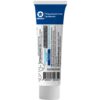
[category_image]
Panthenol Plus cream tube 30 g
$16.39 Original price was: $16.39.$14.89Current price is: $14.89.
Panthenol Plus Cream is a soothing and healing cream specially formulated to accelerate the skin’s natural regeneration process and provide relief from minor irritations, burns, and dry skin. Each 30 g tube contains a blend of panthenol (provitamin B5) and other active ingredients that work together to hydrate, nourish, and repair damaged skin. The panthenol promotes deep moisture retention, helping to restore the skin’s protective barrier while reducing inflammation and irritation.
Categories: Dermatology
Brand: Ternopharm
Panthenol plus
Composition:
Active substance: chlorhexidine dihydrochloride, dexpanthenol;
1 g of cream contains chlorhexidine dihydrochloride 5 mg, dexpanthenol 50 mg;
auxiliary substances: DL-pantolactone, cetyl alcohol, stearyl alcohol, soft white paraffin, mineral oil, lanolin, polyethylene glycol stearate, purified water.
Medicinal form.
Cream.
Main physical and chemical properties: homogeneous cream from almost white to pale yellow color.
Pharmacotherapeutic group.
Dermatological means. antiseptic and disinfectants. chlorhexidine, combinations.
PBX code D08A C52.
Pharmacological properties.
Pharmacodynamics.
Chlorhexidine dihydrochloride is an antiseptic that has a bactericidal effect against gram-positive bacteria, especially sensitive strains of Staphylococcus aureus – microorganisms that are most often associated with skin infections. To a lesser extent, chlorhexidine dihydrochloride is active against gram-negative pathogenic microorganisms. Some species of Pseudomonas and Proteus are resistant to chlorhexidine. It has weak activity against fungi and is inactive against viruses.
Dexpanthenol, the active component of Panthenol Plus, is quickly converted into pantothenic acid in cells and acts as a vitamin. But dexpanthenol has an advantage because it is absorbed faster than pantothenic acid when applied topically. Pantothenic acid is a component of the vital coenzyme A (CoA). In this form, acetyl coenzyme A (CoA) plays a leading role in the metabolism of each cell. Thus, pantothenic acid is necessary for the formation and healing of skin and mucous membrane injuries.
Pharmacokinetics.
Absorption of chlorhexidine through intact skin was not detected. Low concentrations of chlorhexidine in the blood (1 μg/ml) were observed in infants bathed in a 4% detergent solution of chlorhexidine gluconate. Little is known about the distribution of chlorhexidine in organs and tissues, since absorption through the skin is minimal. With oral administration of 300 mg in healthy adults, C max in the blood plasma, which is 0.2 μg/ml, can be determined after 30 minutes. Chlorhexidine is practically not absorbed after local external application.
After oral administration, chlorhexidine is almost completely excreted with feces.
Dexpanthenol is quickly absorbed by the skin. In skin cells, it quickly turns into pantothenic acid and replenishes endogenous reserves of this vitamin.
In the blood, pantothenic acid binds to blood plasma proteins (mainly β-globulin and albumin). In healthy adults, the concentration is approximately 500-1000 mcg/L and 100 mcg/L in blood and serum, respectively.
Pantothenic acid does not break down in the body and is excreted unchanged. 60-70% of the oral dose is excreted in the urine, the rest – in the feces. In adults, 2-7 mg is excreted in the urine, in children – 2-3 mg/day.
Clinical characteristics.
Indication.
Superficial skin injuries of any origin, in which there is a risk of infection: scratches, cuts, abrasions, skin cracks, burns, abscesses, dermatitis. chronic skin lesions, such as trophic leg ulcers and bedsores. skin infections, such as secondarily infected eczema and neurodermatitis. treatment of cracked nipples in women who are breastfeeding. in minimally invasive surgery: injuries and surgical wounds.
Contraindication.
Hypersensitivity to Dexpanthenol and/or chlorhexidine or any other components of the drug. cannot be applied to a perforated eardrum.
Interaction with other medicinal products and other types of interactions.
Chlorhexidine is not compatible with soapy substances and other anionic compounds. panthenol plus is not recommended to be used simultaneously with other antiseptics to prevent their mutual influence (antidote or inactivation).
Features of application.
Avoid contact with eyes, ears and mucous membranes. if the drug gets into the eyes, they must be thoroughly washed with water.
Panthenol Plus is not recommended for the treatment of skin irritations, the probability of infection of which is low (for example, with sunburn). Do not use for allergic skin diseases without infectious complications.
Large, heavily contaminated and deep wounds, as well as wounds caused by bites and punctures, require medical intervention (there is a risk of tetanus). If the size of the wound remains large for 10-14 days or the wound does not heal, the expediency of prescribing the drug should be reconsidered. It is also necessary if there is severe perifocal hyperemia, the wound swells, severe pain appears, purulent exudation increases, or the injury is accompanied by fever (danger of developing sepsis).
The drug should not be used for the treatment of infected wounds with abundant purulent exudation.
If symptoms persist or the condition worsens, you should consult a doctor.
Use during pregnancy or breastfeeding.
During the study of the reproductive function in animals, no risk to the fetus was found. however, Panthenol Plus should not be used on large skin surfaces during pregnancy, as there is no data on controlled studies involving pregnant women.
The drug can be used by women during breastfeeding, but should be avoided on large skin surfaces. If the drug is used to treat cracked nipples, it should be washed off before breastfeeding.
The ability to influence the speed of reaction when driving vehicles or other mechanisms.
Does not affect.
Method of application and dosage.
For adults and children over 1 year old, apply the drug once or several times a day, depending on the need, on pre-cleaned affected areas of the skin.
The daily dose for repeated use should not exceed 5 mg
If necessary, you can apply bandages.
The frequency of application of the drug and the duration of treatment are determined by the doctor’s recommendation individually, depending on the clinical signs of skin damage. Avoid using on large areas of skin.
Children.
The drug should be used in children older than 1 year.
Overdose.
There are no known cases of overdose when using the drug locally.
Dexpanthenol, even in high doses, is well tolerated and considered non-toxic. Hypervitaminosis is unknown.
An increase in the level of aminotransferase after self-poisoning with chlorhexidine has been described.
Often after repeated local application to the same areas of the skin, its irritation may occur. The drug is intended for the treatment of superficial skin damage. Avoid using on large areas of skin.
Adverse reactions.
Disorders of the immune system, skin and subcutaneous tissue. allergic reactions, including allergic skin reactions such as contact dermatitis, allergic dermatitis, itching, erythema, eczema, rash, urticaria, edema, skin irritation, blisters. hypersensitivity, anaphylactic reactions and anaphylactic shock (potentially life-threatening) with relevant laboratory and clinical manifestations, including asthma syndrome, reactions of mild to moderate severity, potentially affecting the skin, respiratory system, gastrointestinal tract, cardiovascular system, including cardiorespiratory failure.
Expiration date.
2 years.
Storage conditions.
Store at a temperature not higher than 25 ºС.
Keep out of the reach of children.
Packaging.
30 g each in a tube, in a cardboard pack.
Prescription status.
Without a prescription.
Be the first to review “Panthenol Plus cream tube 30 g” Cancel reply
You may also like


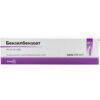
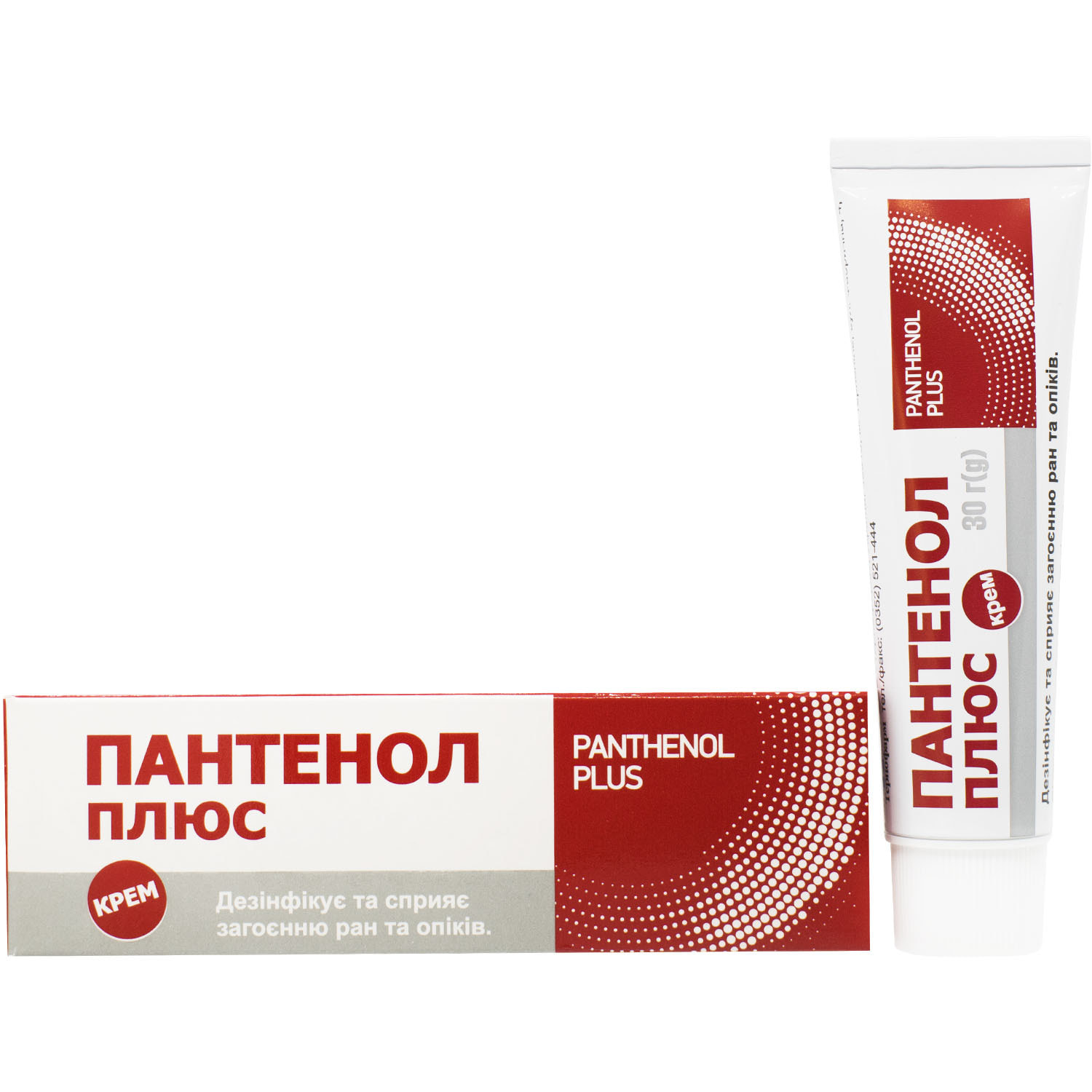
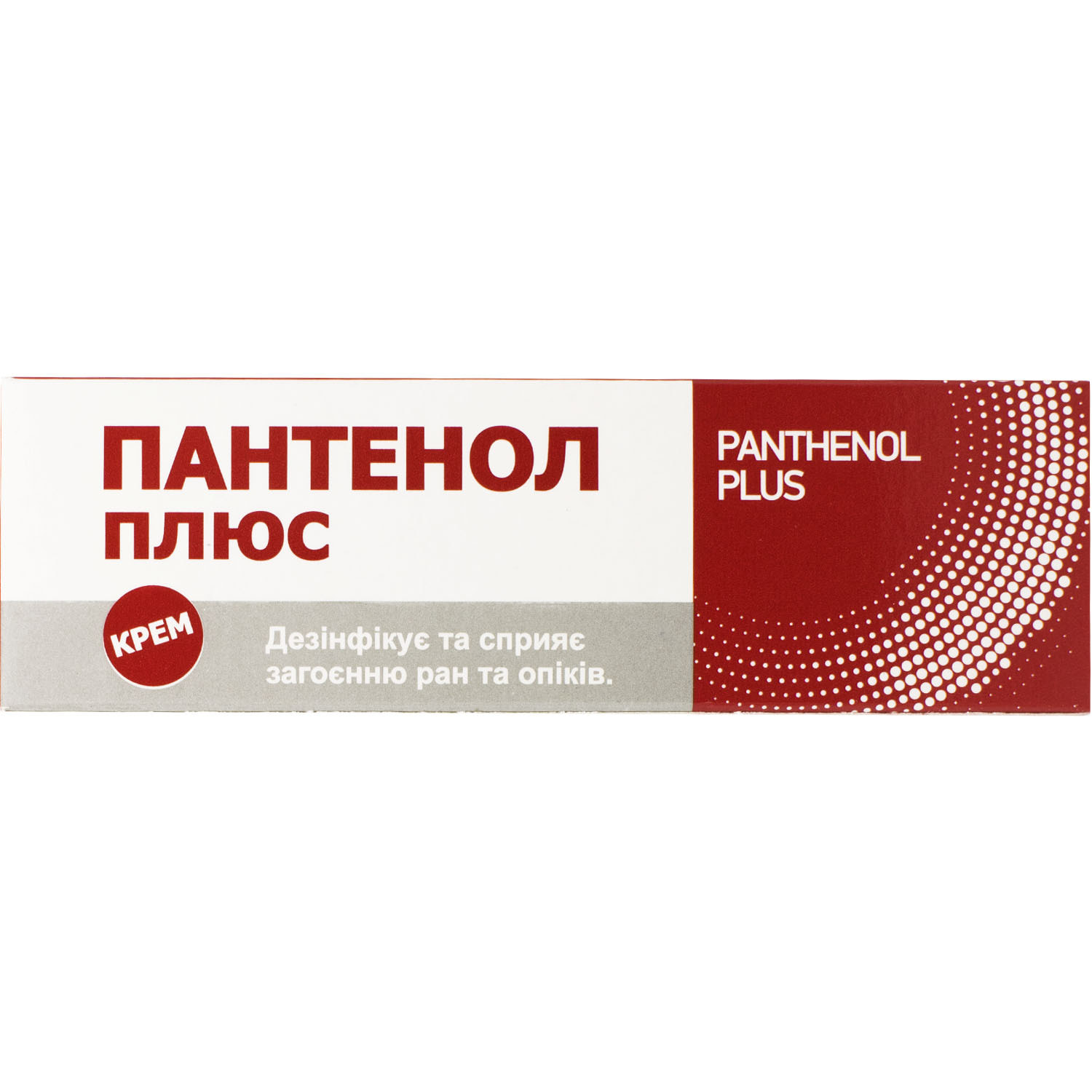
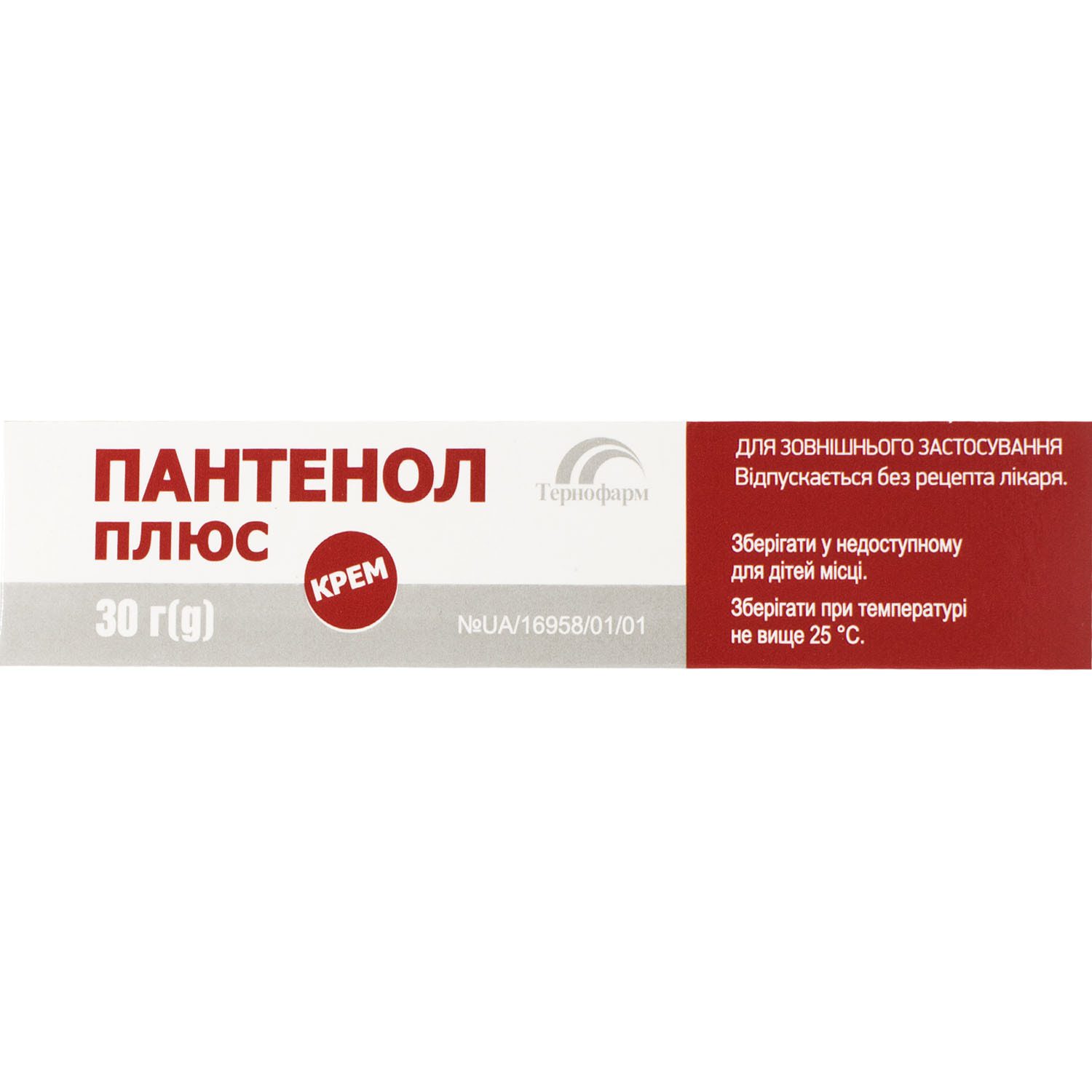
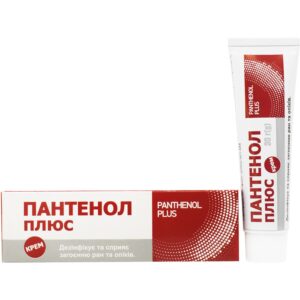
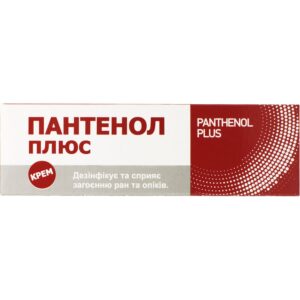
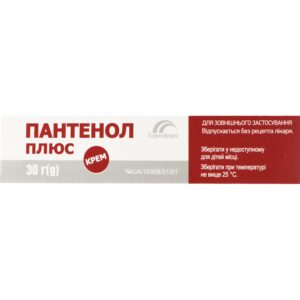
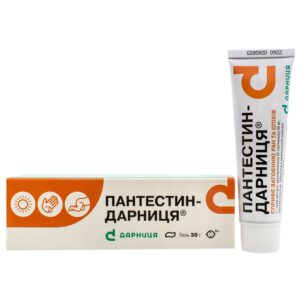

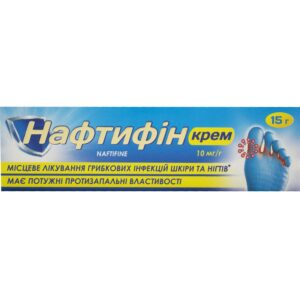

Reviews
There are no reviews yet.